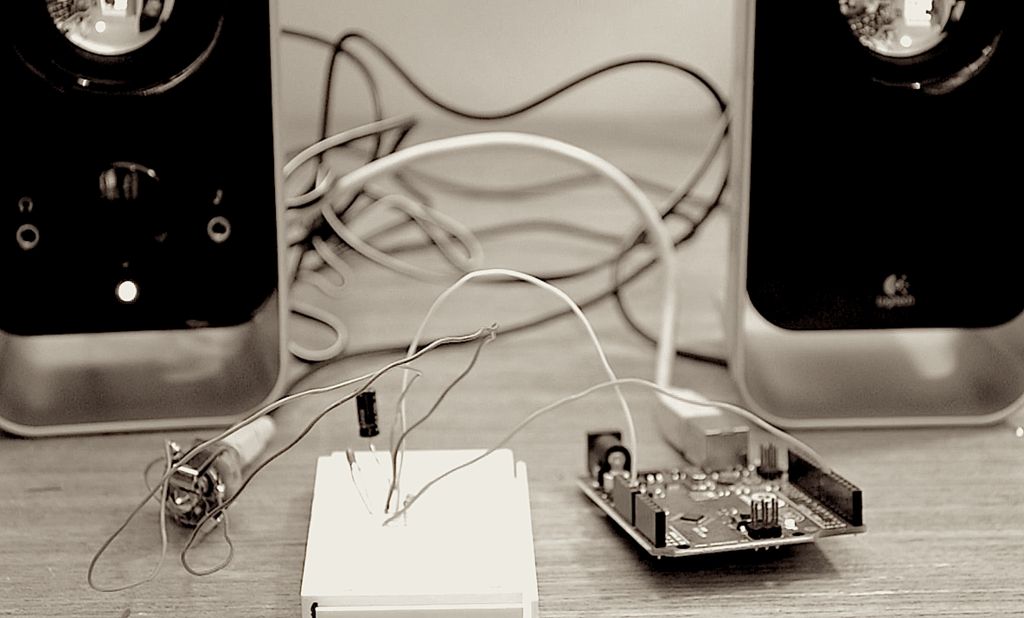Summary of Turn your Arduino into a 4 voice wavetable synth
This project features a 4-voice wavetable synthesizer for Arduino by DZL from GeekPhysical, utilizing sine, saw, square, and triangle wavetables with envelopes to produce beats. The tutorial guides you through building a simple sequencer that plays melodies with potential for MIDI control or touch interaction. The setup requires basic components on a breadboard linked to an Arduino, outputting audio through computer speakers, noting that headphones require a preamp for sufficient power.
Parts used in the Arduino 4 Voice Wavetable Synthesizer Project:
- Arduino board
- Breadboard
- Wires
- 2.2k Resistor
- 100nF Capacitor
- 100µF Capacitor
- Audio jack (with left, right channel wires, and ground)
- Pair of computer speakers
Multiple synthesizer projects have been done for the Arduino, but few have been able to utilize the full power of the Arduino processor. DZL from GeekPhysical wrote a 4 voice wavetable synthesizer that is one of the more advanced software based synths for the Arduino. It has wavetables included (sine, saw, square and triangle) and envelopes to create beats.
This instructable will show you how to make a simple sequencer that plays a little melody. You can hear how it sounds here:
It is up to you to modify the code to do many other things. Possible examples could be a midi controlled synth (sample code included), it could be a strange noise machine like this one:
Or you could detect touch and convert it into sound patterns:
Step 1: Parts

- Arduino board
- BreadBoard
- Wires
- 2.2k Resistor
- 100n Capacitor
- 100u Capacitor
- Jack where left and right channel has one wire and one wire to ground
- A pair of computer speakers
Don’t worry if you don’t have the exact values. It will probably work, but might be with lower sound quality. The Arduino is not powerful enough to drive a pair of headphones so you will need some kind of preamp for that – e.g. a headphone preamp like this one.

